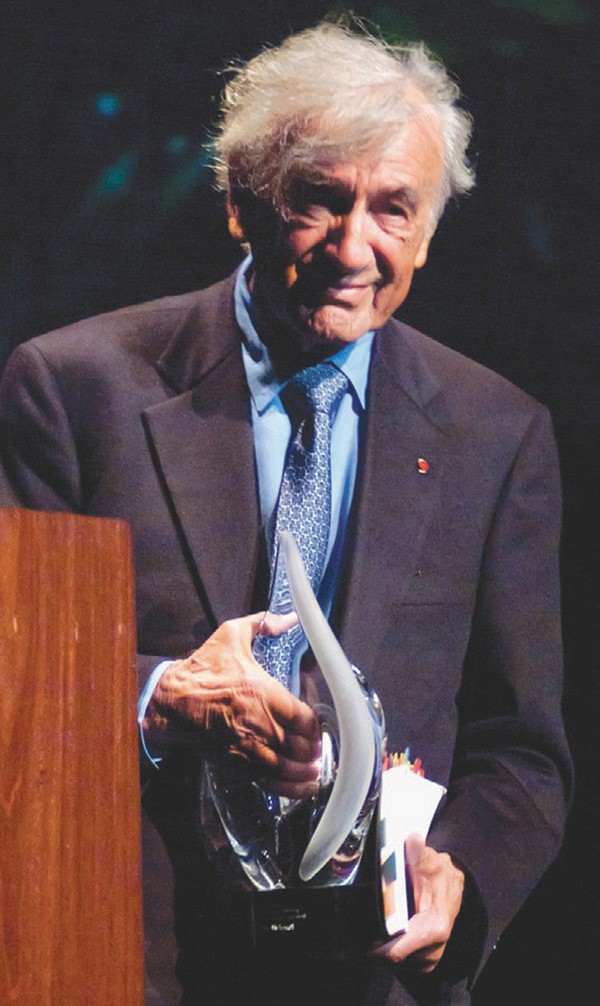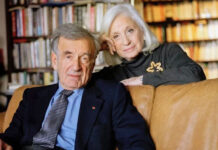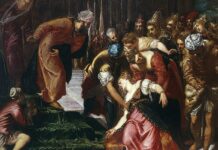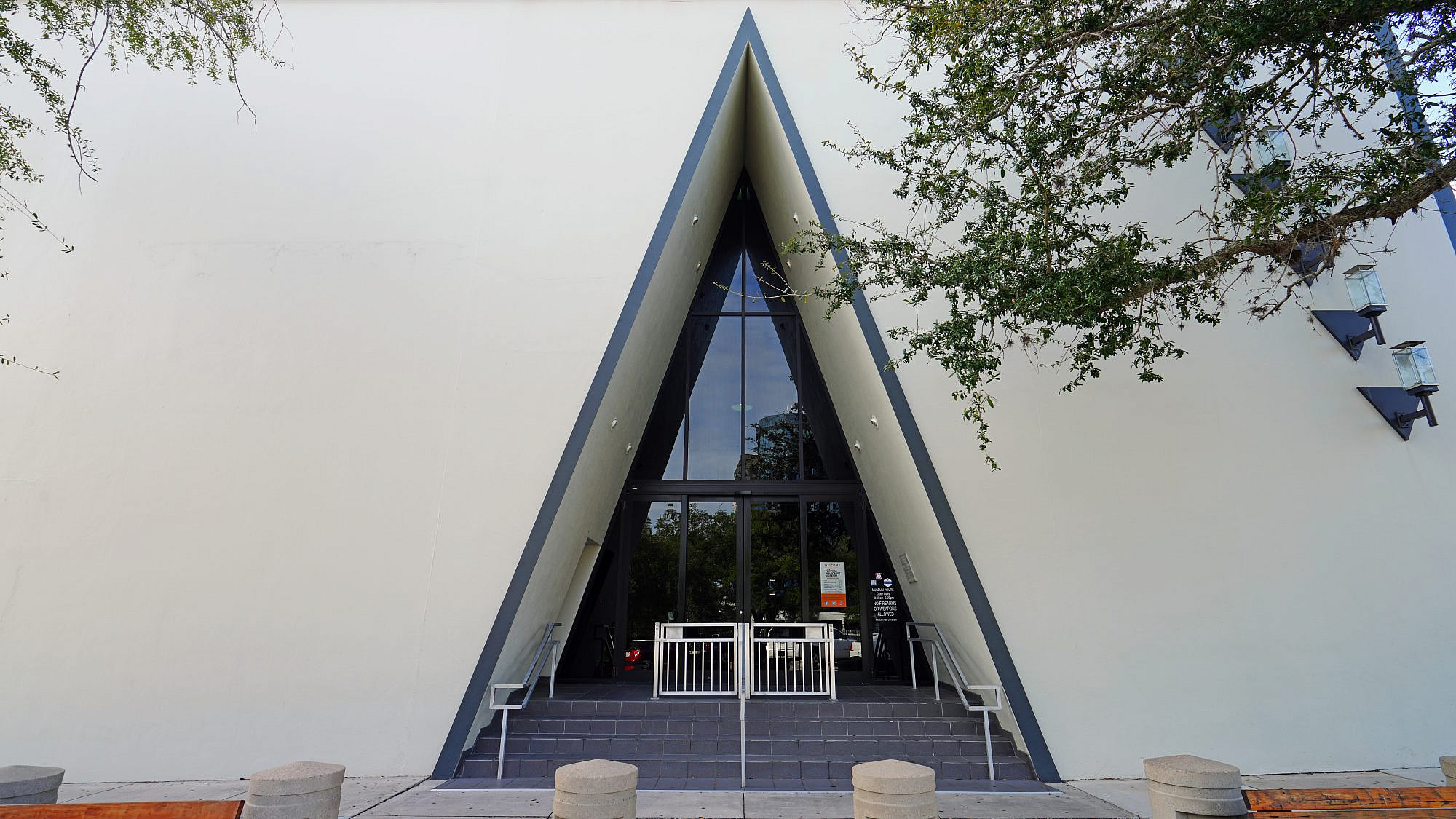For about a year, officials at the Florida Holocaust Museum (FHM) in downtown St. Petersburg kept a closely guarded secret that the museum was seeking to become the permanent home of a treasure trove of documents from the late Elie Wiesel.
On Feb. 3, at its annual “To Life” fundraising gala—the museum’s biggest annual social event—museum board chair Mike Igel let the secret out, telling the audience the Wiesel Foundation had chosen the museum to house and exhibit a collection of Wiesel’s memorabilia, including his 1986 Nobel Peace Prize, documents, manuscripts, letters, photographs, works of art and recordings.
During a visit to FHM last year by Wiesel’s son, Elisha, Igel learned the family and the Wiesel Foundation were looking for an institution that would do more than just house and display Wiesel’s collection.
“They wanted an organization that would use the collection to passionately, actively and dynamically continue professor Wiesel’s legacy, using it to create more ‘Upstanders’ and spread his message far beyond the museum’s four walls,” Igel said. “Thankfully, our proposal was built around that very theme: not just education, but action. It’s what we are as an institution.”
The museum will create a permanent exhibit honoring Wiesel and displaying items in the collection, including re-creating Wiesel’s office.
The museum will also create an international traveling exhibit from materials in the collection and, as part of the agreement with the foundation, the nearby St. Petersburg campus of the University of South Florida will house Wiesel documents for access by the public and researchers, anchoring a new Elie Wiesel Center for Humanitarian Ethics.
Wiesel “remains a world icon. He was perhaps the greatest communicator we’ve ever had advocating for the importance of the lessons of the Holocaust,” said Igel. “He believed that honoring the victims of the Holocaust must be an active undertaking, not just a history lesson, and that concept is integral to the museum’s core mission. It’s the main reason the museum exists.”

Wiesel, who barely survived Auschwitz and Buchenwald, wrote in his most famous book, Night, of seeing his mother and sister directed to Auschwitz gas chambers, where they perished. It also tells of how he and his father and so many others struggled to survive in the death camps, and of how he watched his emaciated father die days before the camp was liberated.
“His life’s work was helping all of us, in every generation, realize that we have a collective moral responsibility not just to look evil in the face but to fight it. As he so eloquently stated, ‘Human suffering anywhere should concern people everywhere,’” Igel said.
Wiesel died in 2016 at the age of 87.
The museum’s pitch
Igel said about a year ago a letter from the Wiesel Foundation arrived at the museum, inviting the museum to submit a proposal on how it would handle the collection of materials. “We wondered if we should give it a shot,” he said, and ultimately, the board decided to do so.
After a few rounds of conversations with the foundation, it was clear there were several other applicants vying for the collection, though Igel said they never found out who those entities were.
At each turn, after FHM received feedback from the foundation, museum officials revised plans. Eventually, FHM submitted renderings of how the Wiesel collection would become a centerpiece of the museum, making it part of signage on the renovated building and how the exhibit will be the first thing visitors encounter when they enter.
The museum learned that Wiesel’s wife, Marion, 93, was delighted by the renderings, and Igel has no doubt that helped push the foundation board to offer the collection to FHM.
Another factor that may have tipped the scale in FHM’s favor, he said, is its commitment to tell the story of Wiesel not just as the world-famous man who had the audience of world leaders, but also of him as a husband, father and grandfather. Re-creating his office, “where the magic happened,” and telling “a full life story” will be part of the exhibit’s aim, Igel said.
While FHM does not know what other institutions were vying for the collection, Igel noted that Wiesel’s longtime connection to St. Petersburg was yet another factor helping the museum’s bid. Wiesel was a visiting professor each winter at Eckerd College for nearly 30 years, and he got to know members of the local Jewish community, including at the museum, where he cut the ribbon when FHM moved to its current home in 1998. He also received the museum’s highest honor, the Loebenberg Humanitarian Award, in 2012.
Will incorporate most, but not all, materials
Landing the collection is a huge accomplishment for the Florida Holocaust Museum and its future, Igel said. Wiesel is likely to draw visitors from all over the world to learn more about perhaps the most famous Holocaust survivor.

However, it will not be the only institution with a Wiesel collection. There is already one at Boston University, where Wiesel was a longtime professor; those materials will remain there, including correspondence between Wiesel and world figures. An initial announcement by FHM said it was receiving the “entire” Wiesel collection, but Elisha Wiesel noted in his video address to the “To Life” gala audience that FHM would receive “everything [his father] kept closest to him that did not end up in the archives at Boston University.”
He said FHM and the foundation would soon enter into a contract “that will license a lifetime’s work of my father’s archival papers, manuscripts, correspondence recordings [and], library … .”
While Boston University does have some significant documents in the Howard Gotlieb Archival Research Center and has previously hosted an exhibition of his papers, all of its items are kept at its archival research center and are not on public display for passersby. Researchers or members of the public can make appointments to view materials in the center’s reading room, said Johanna Kaiser, communications director for the center. The university also houses the Elie Wiesel Center for Judaic Studies, but the center also does not have a museum-like display.
For now, nobody knows precisely what the Holocaust museum will receive because there are trunks of materials that have not been opened in years. In the coming weeks, museum officials will travel to New York to catalog all of the materials in the collection. Just cataloging is expected to take several months.
A boxcar, a boat and Elie
Before the museum learned that it had been awarded the Wiesel collection, FHM officials were already reconfiguring the building to accommodate their second signature exhibit—Thor, a 10-ton Danish fishing vessel that was used 80 years ago to help ferry Danish Jews under threat of extermination by Nazis to the safe-haven of Sweden. The museum is in the process of preserving the boat and prepping it for display. It will symbolize the goodness of humanity, of non-Jews who risked their lives to help rescue the Jews. It will be displayed next to the museum’s original signature exhibit, a railroad boxcar believed to have transported Jews to death camps—a symbol of the worst of humanity.

With no certainty that the museum would be awarded the Wiesel collection, Igel said from the start, sketches of the new layout of exhibit space with the boxcar and Thor also included space that they hoped would become a permanent Wiesel exhibit. “It was like we were willing it to happen,” he said.
Last fall, amid the gloomy news of the Hamas terrorist attacks in Israel on Oct. 7 and the ensuing war in the Gaza Strip, Igel said he got the call on Oct. 18 (his father’s birthday) that the museum would get the collection. Igel said it was hard to contain his excitement when he called his wife to let her know, “We won!”
It is expected to take about a year and a half before the Wiesel exhibit is complete, but Igel hopes to have at least part of it, including his Nobel Peace Prize, on display as soon as possible, with more being phased in.
Thor should be moved into the museum this fall.
This story originally appeared in the Jewish Press of Tampa Bay.


























